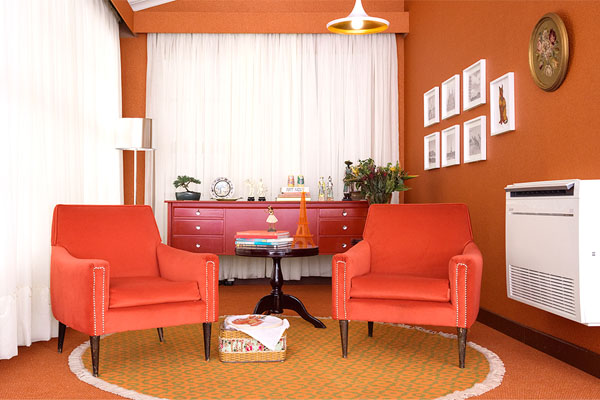
A ductless mini-split system operates in the same manner as a traditional heating and cooling system that most of us are familiar with – the only difference is that it does not use the ductwork found in conventional systems. Instead, it has an indoor unit, an outdoor unit, and a refrigerant line that connects the two components via a small hole in the wall. It is the job of the indoor unit to blow warm or cold air to keep the indoor environment comfortable. Meanwhile, the outdoor unit is where the release of the heat happens via the refrigerant. The outdoor unit is the compressor.
Many classify mini-split systems into two categories – the single zone and the multi-zone. The former has one indoor unit and one outdoor unit. It is the smaller of the two variants and is specifically designed for heating and cooling a single room or zone. On the other hand, a multi-zone unit has one compressor that attaches to multiple indoor units inside of the home. These indoor units condition several rooms or zones in the house or building.
When you contemplate buying a ductless mini-split system, you must first study the different types. Although there are numerous types to choose from, this article will focus on one variety – the floor-mounted ductless mini-split.
Types Of Ductless Mini-Split Systems
Contents
But before we talk about the floor-mounted ductless mini-split, it’s best that we preview some of the other options you have:
1 – Vertical Air Handler
This is a type of mini-split system that conveniently connects to your existing ductwork. It works like a central air conditioner, but the modern system corresponds to improved efficiency and cost-effectiveness.
2 – Do-It-Yourself
This type of mini-split system offers a single zone function that you can install without the help of a professional. It is mounted on the wall and comes with a pre-charged line set. Hence, you don’t need advanced tools to set it up on your own. A DIY mini-split system is an ideal solution for someone who tries to avoid the added expense of hiring a professional for its installation. The only problem with it is that most manufacturers will not validate a warranty to products that are not installed by a licensed HVAC professional. Therefore, this option is not as cost-effective as it may seem.
3 – Ceiling Cassette
A mini-split system with a ceiling cassette design has an outdoor unit and an indoor air handler. Since the indoor unit is mounted on the ceiling, it is a sensible option for those who are looking for a ductless system that doesn’t take up that much space and won’t become an eyesore. A ceiling cassette unit is ideal for someone who wants heated or cold air in all directions as it can provide an extensive airflow when compared to other units.
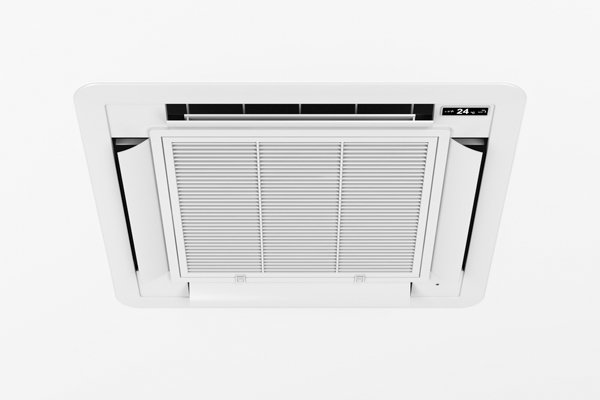
4 – Concealed Duct
A mini-split with a concealed duct is set up in the ceiling of your house. The difference between this one and the ceiling cassette design is that this relies on ductwork. You set it up on the ceiling for a quick link up to the ducts. It will release cold or warm air through the air vents and is quite a versatile solution if you hope to cover several rooms.
5 – Ceiling Suspended Type
A ceiling suspended mini-split is like the two previous variants in a way that it mounts to the ceiling. It is the perfect heating and cooling solution for homes with little wall space to spare. The indoor unit looks like a wall-mounted system because it is discreet and won’t disrupt your interior aesthetics.
6 – Wall-Mounted Unit
The wall-mounted mini-split system holds the distinction of being the most common and preferred option in a residential setting. One of the reasons for its popularity is its affordable price. The indoor unit is placed on a wall and will pump air into the room. The time to deliver a comfortable indoor environment depends on how high the HVAC contractor installs the unit. But even if you wait a little longer, the advantage of a wall-mounted system is that it provides an even distribution of heated or cold air.
7 – Floor-Mounted
A floor-mounted mini-split system isn’t installed on the floor, but rather at the bottom of a wall near the floor. The proximity of the indoor unit to the people that occupy the room is the reason why the benefit of heated or cold air is felt quicker compared to a wall-mounted variant. So, if you have limited space on your walls, then you may want to go with a floor-mounted mini-split.
The only drawback with a floor-mounted system is that it can be difficult to install if you have a fully furnished house with lots of appliances and furniture. You do not want to obstruct the indoor unit because it could ruin its ability to be as efficient as possible. You also cannot block the airflow because it could diminish or reduce its performance.
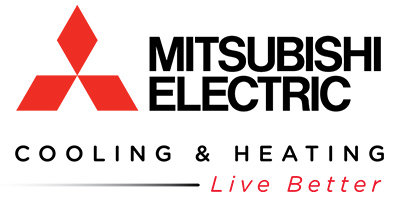
Notable Features Of A Floor-Mounted System
The investment in a floor-mounted mini-split system gives you more than just efficient heating and cooling. It also integrates modern design and features to your home, thereby providing the best comfort possible.
Style
Floor-mounted units offer more than just maximum comfort. Aside from conditioning the indoor air, they’re also designed to look stylish in any living space and at whatever angle. Its modern design is highlighted by a minimal footprint. In other words, it does not have any detrimental effect on your existing interior décor or theme.

Zone Comfort
The floor-mounted ductless system allows you to control the indoor atmosphere of each room or zone at home. You manage each zone based on your preferences. It maintains the temperature that you desire in your bedroom or living room while ensuring that there are no uncomfortable temperature swings in the other zones.
Healthy Air
Modern HVAC systems are equipped with air filters to purify indoor air. The advanced filtration systems in modern HVAC means that the environment inside your house is protected from airborne allergens and particles, including those that bring disease and sickness. You can even go for a ductless HVAC system with a multi-part filtration system.
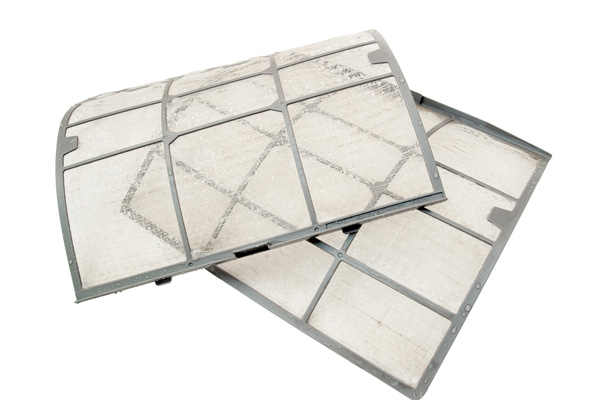
Easy Access Of Filters
One benefit you’re getting from floor-mounted systems is that the air filters are conveniently placed on the front panels. It means that you have an easy time in removing and cleaning the filters. Most indoor units feature washable filters, which means you can remove them for cleaning purposes instead of buying a new one all the time. Many filters are designed to last up to a decade of use.
Inverter Technology
The inefficiency of a traditional HVAC system that relies on ductwork is the reason why ductless systems with inverter technology are so appealing. For instance, a floor-mounted ductless system equipped with inverter technology will measure the room conditions so that the system can adjust the compressor and fan settings. The purpose of the measurement and corresponding adjustments is to come up with consistent temperatures all the time. The benefit of inverter technology is that it minimizes the use of energy in keeping everyone comfortable inside a room or living area.
Hot-Start Technology
Majority of floor-mounted ductless systems today come with a feature called “hot-start technology.” Combined with a multi-vane airflow control, the equipment works by pre-heating the coil so that you get hot air from the get-go. It means that you no longer must wait for several minutes before the system blows hot air.
Ultra-Quiet Operation
The condenser and indoor unit of a floor-mounted ductless system produce minimal sound, which is why it is an ideal HVAC replacement for a household that requires a quiet environment. Some of the best makes and models out there can operate at a minimal 21 dB.
Smart Remote Controller
When you buy a floor-mounted system, you expect to have full control of your equipment with the convenience of wireless technology. The remote control allows you to manage everything, including fan speed, airflow power, as well as vane direction. You can even opt for a smart remote controller which allows you to create schedules and programs. You may also use your smartphone to control the equipment via a downloadable app.
Clean Installation
Unlike a ducted unit, the installation of a single-zone mini-split unit is a breeze. For instance, the floor-mounted variant does not create a substantial mess. The only thing that will take some time to do is drilling a three-inch hole through the wall to run the refrigerant line in it.
Installation Tips
Getting the most out of your new floor-mounted mini-split system means following these simple installation steps:
- Install the indoor unit with a clearance of at least six inches above the floor.
- Install the indoor unit in an area inside the house that doesn’t get exposed to direct sunlight. There’s a reason for this, and that’s because the unit becomes inaccurate in measuring indoor temperature when it is subjected to the heat from the sunlight or other heat sources.
- Be sure not to install the indoor unit in an area near a TV, microwave, or any appliance that has electromagnetic interference. You do not want the communication between the remote control and the indoor unit to get disrupted.
Important Reminder: don’t put the indoor unit behind a piece of furniture because it will block the airflow and eventually compromises the performance of your unit. The floor-mounted ductless system needs constant and unobstructed airflow to efficiently heat or cool a room.
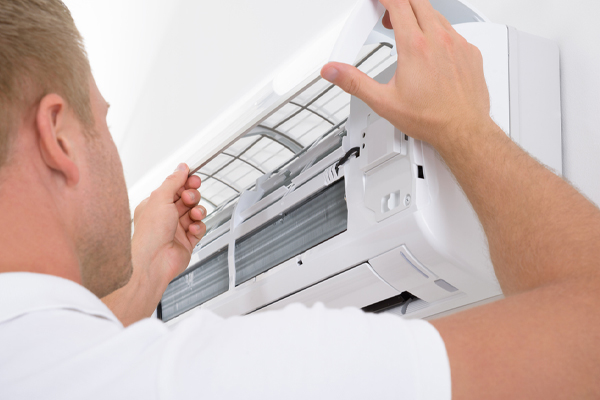
When Should You Choose A Floor-Mounted Ductless Unit?
If you have an attic bedroom, then a floor-mounted unit is the ideal heating and cooling solution. The cramped space coupled with slanted ceilings means that it’s not feasible or practical to add wall-mounted equipment. A floor-mounted unit would work well in a situation like this.
Conclusion
Once you make up your mind and choose a floor-mounted ductless system for your home, then we recommend that you call your local HVAC technician to help you find the best make and model. The first thing you must figure out is your home’s specific heating and cooling needs, and that is where a professional HVAC technician can help. Hire someone who comes with extensive experience in the installation of a floor-mounted mini-split system.
Check Out One Of Our Ductless Installation Projects
Mitsubishi Ductless Installation Project In Rocky Hill, New Jersey
Call PFO Heating & Air Conditioning To Learn More About Ductless HVAC Systems

For all your HVAC system needs, call PFO Heating & Air Conditioning today. Our technicians are all NATE-certified, and they have a great deal of experience. They’ll also determine what your home comfort needs are and find the best and most affordable solutions to meet them.
As a full-service HVAC company, PFO Heating & Air Conditioning offers an array of HVAC services. This includes heating and cooling installations, tuneups, repairs, and much more. We offer free, in-home consultations. Call now to schedule an appointment.
Click here to contact us now or call us at (800) 253-9001 to find out more!



